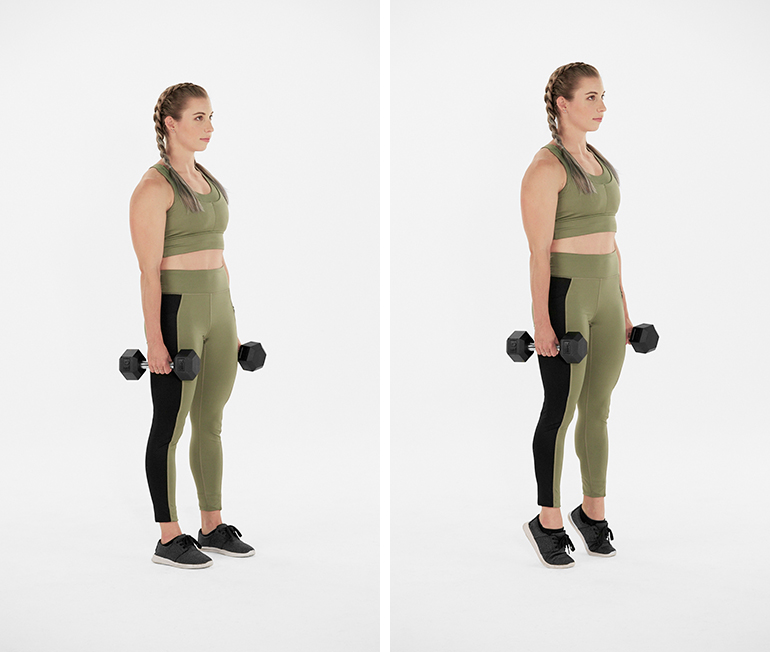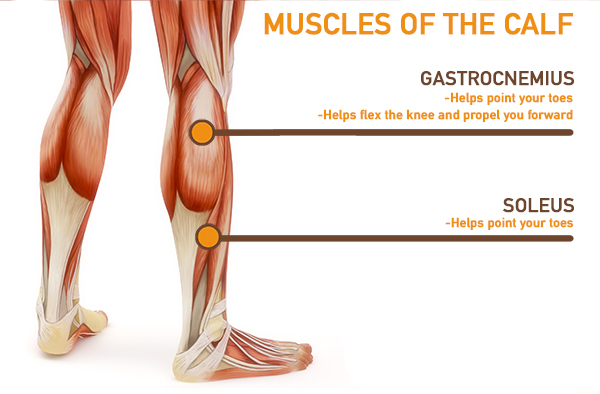Standing calf raises require minimal equipment — or none at all — and they’re suitable for beginners and seasoned exercisers alike.
This move works your calf muscles and has numerous benefits, including ankle strength and lower-body performance.
How to Do a Standing Calf Raise
- Stand with your feet flat on the floor, hip-width apart, and toes facing forward. If needed, use the wall or the back of a chair for balance.
- Rise onto the balls of your feet, as high as you can. Give your calf muscles an extra squeeze at the top.
- Pause, then lower your heels back down in a slow, controlled motion. (When you go too fast, your Achilles tendon does more work than your calf muscles.)
- Repeat as desired, maintaining that slow tempo.
Want to make it harder?
Marcus suggests these modifications:
- Do single-leg calf raises.
- Hold weights to add resistance.
- Start with the balls of your feet on a raised surface (such as an aerobic step).
What Muscles Does This Exercise Work?
Calf raises primarily work the gastrocnemius and soleus — the two main calf muscles that connect to the Achilles tendon — explains Jasmine Marcus, PT, DPT, CSCS, a strength and conditioning specialist and physical therapist based in Ithaca, NY.
That’s why Marcus assigns this exercise to almost all of her patients with leg injuries.
The soleus is activated more when your knee is bent, so you may want to integrate some seated calf raise variations into your workout to target that muscle.
What Are the Benefits of a Standing Calf Raise?
The standing calf raise exercise
- Strengthens the muscles in your calves
- Improves ankle strength and stability
- Helps with injury prevention
- Improves athletic performance
- Aids with balance
- Builds bigger calves over time.
When leg day comes around, do you focus mostly on your quads and hamstrings, ignoring your calf muscles?
The calves may be easy to overlook, but there’s a good reason to make them a high priority in your lower-body workout.
“This muscle group is one of the strongest in the body and is responsible for propelling your forward motion when you walk or run, and giving you power when you jump or hop,” says Marcus.
“Doing calf raises should make your calves bigger, if size is what you’re going for,” Marcus says.
Keep in mind, however, that your calves are accustomed to lifting your body weight with every step you take — so if hypertrophy is your goal, be prepared to use a lot of weight (70 to 80 pounds is reasonable, even for beginners), switch to single-leg calf raises, and/or do a lot of reps.



